7 Best Bench Press Alternatives: with Pictures!
As popular as the conventional barbell bench press is, many lifters find that it either lacks in certain aspects or is simply not feasible with their current gym set-up.
Fortunately for them, the regular bench press isn’t the only exercise of its class. Quite a number of alternatives do indeed exist, many of which build upon specific advantages that are exhibited by the bench press itself.
If the barbell bench isn’t quite to your liking, try out the dumbbell bench press or machine chest press. Likewise - no bench? Perform floor presses instead.
Alternatively, returning from an injury or correcting a specific sticking point may both be aided by performing pin presses as a temporary substitute. The potential alternatives are nearly endless.
What Makes a Proper Barbell Bench Press Alternative?
Regardless of your reasoning for substituting the bench press, several key characteristics must be shared between the alternative exercise and its predecessor.
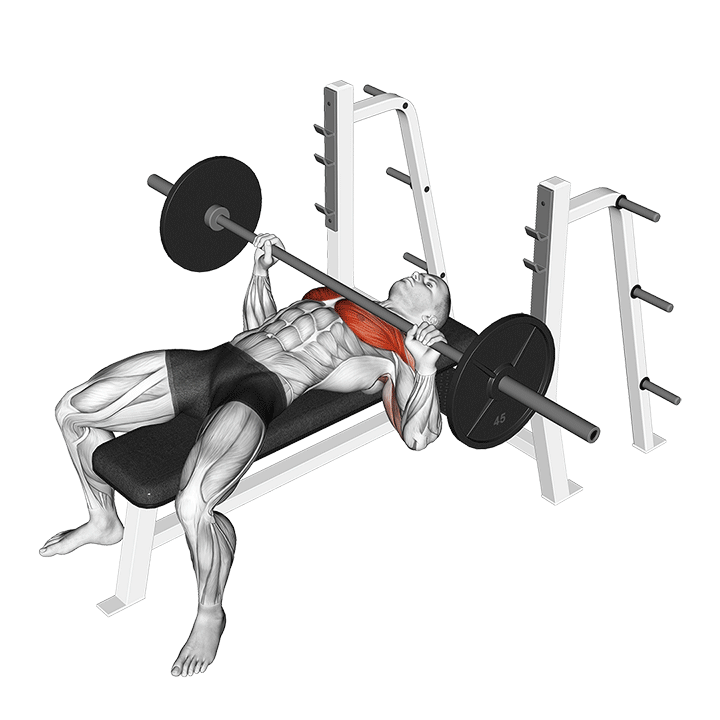
The most key of these is targeting the right muscle groups - of which should be the pectoral muscles, anterior deltoids and triceps brachii.
Depending on your specific training needs and chosen alternative, the emphasis on these three muscles may shift, with some exercises targeting the triceps or deltoids to a greater degree than the chest.
Matching Programming
In addition to making sure the right muscles are being worked, it can be beneficial to match the general role and function of the alternative with that of the bench press.
Most often, the bench press itself is included into training programs as the primary compound movement, acting as the main driver of muscular hypertrophy and neurological strength adaptations in the upper body.
Unless specifically being substituted to change this role, the alternative exercise should be able to function in a similar capacity within the larger scheme of your workout session.
This means a movement that can be loaded and scaled in order to maintain progression, as well as one that can be programmed to act as a primary compound movement.
A Note on Positional Bench Press Variations
Although both the incline and decline bench press are indeed “alternatives” to the flat bench, they are similar enough that we’ve omitted them for the purposes of brevity.
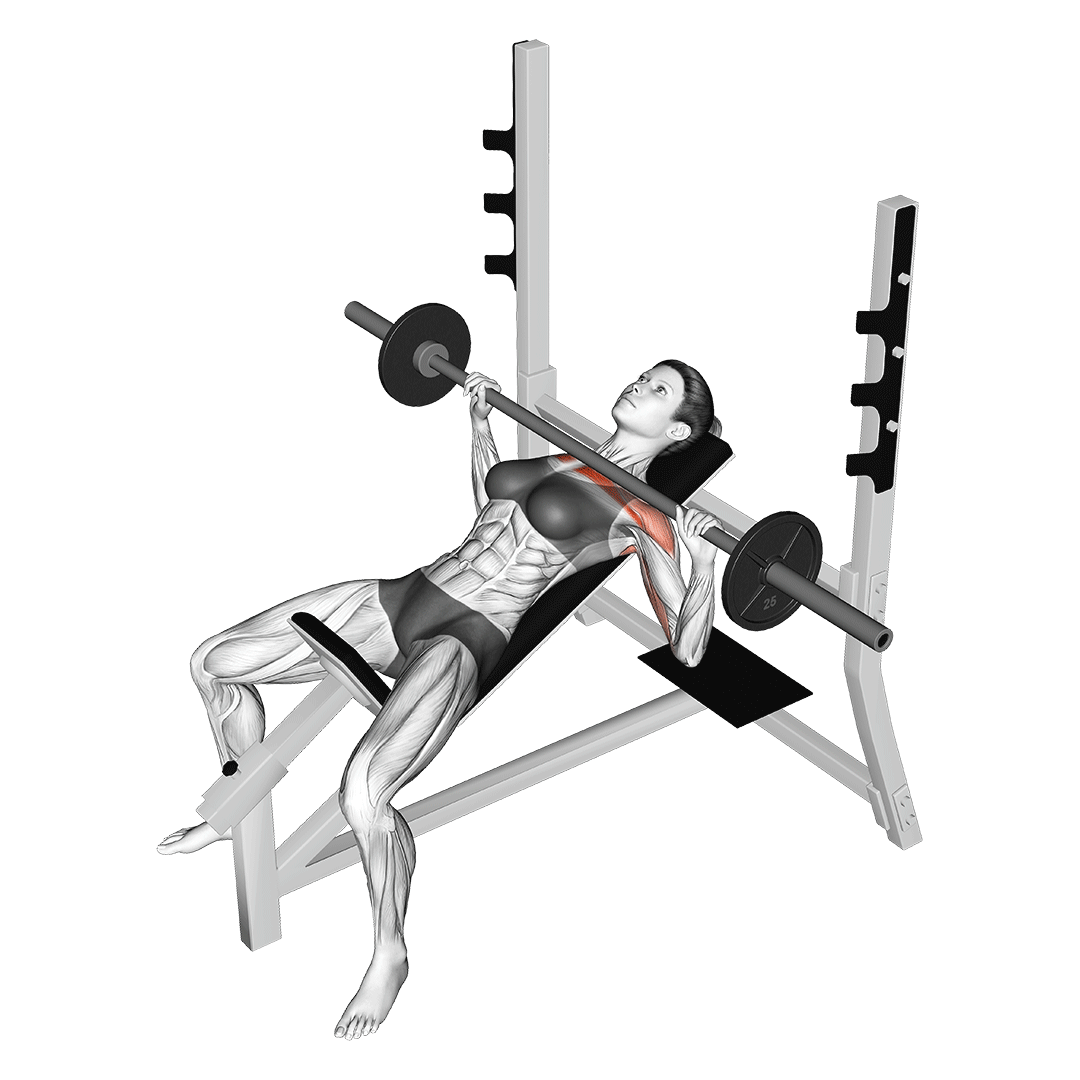
This is likewise much the same for the wide and close grip versions of the bench press - both of which are nearly identical to the conventional bench, only with a change in grip width so as to emphasize different muscles.
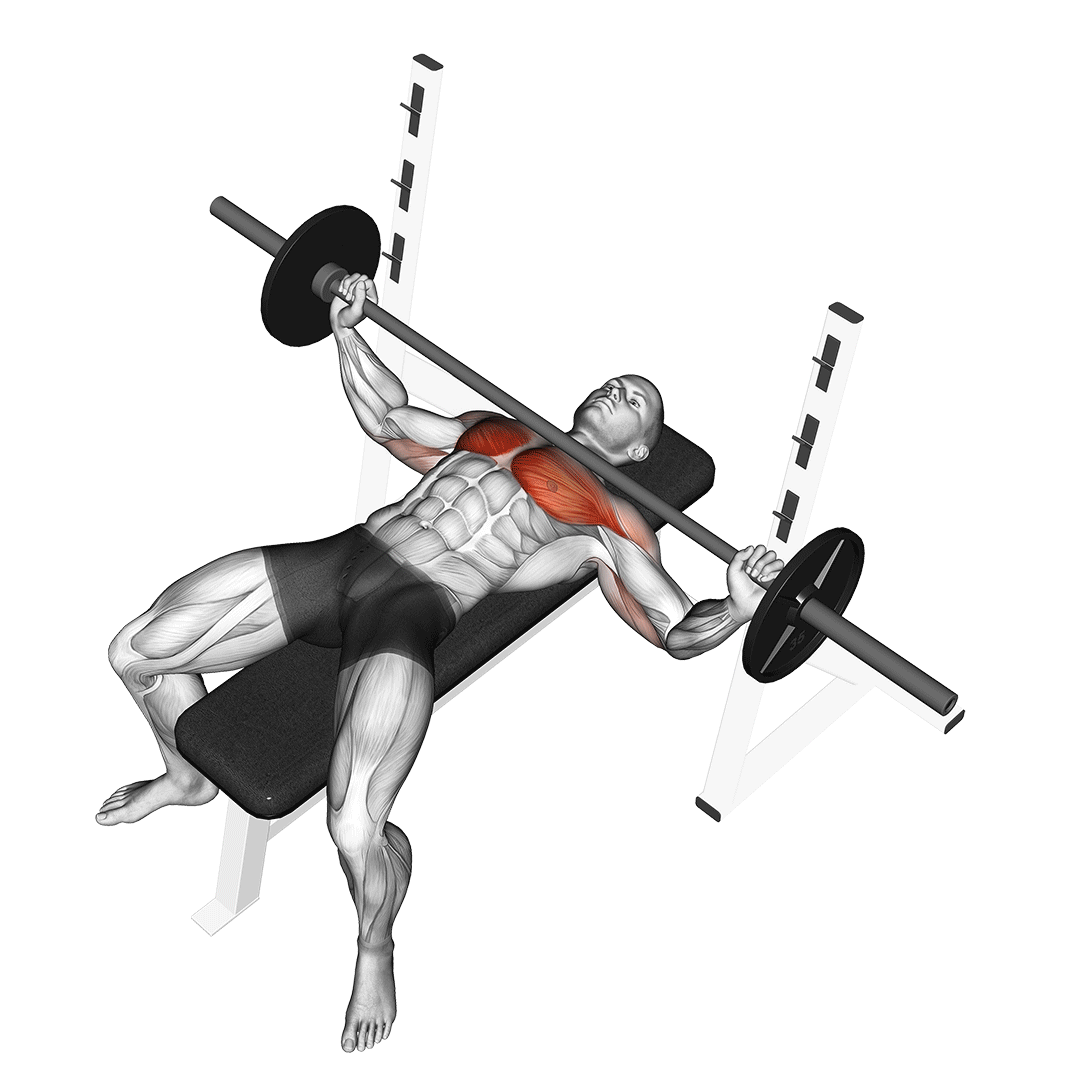
If you’re searching for barbell bench press alternatives because you wish to better develop certain sections of your push muscles, then these exercises may be worth investigating.
Bench Press Alternatives
1. The Floor Press
The first bench press alternative to look at is the floor press - of which, like its name, is simply a bench press performed on the floor. This shortens the exercise’s range of motion to the upper half, but is better than nothing if no rack or bench is available.

Like the conventional bench press, the floor press is an open chain compound movement primarily performed for training the push muscles of the upper body.
The main benefit to substituting with the floor press is its lack of equipment requirements. All that’s needed is a barbell and a set of plates.
However, further benefit can be found in the more technical and advanced side of strength training. Lifters with difficulty, sticking points or instability in the latter half of their regular bench press range of motion can correct such issues with the floor press.
Likewise, because the lower half of the bench press range of motion is removed, the floor press places greater emphasis on the triceps brachii and deltoids over the chest.
Equipment Needed
The floor press needs only a bar and a pair of plates.
Muscles Worked
This particular alternative emphasizes the triceps brachii more than the anterior deltoids of pectorals, as the range of motion remains in the upper half.
How-to:
To perform a repetition of the floor press, the lifter will load a barbell and set it on the ground.

Sliding beneath the bar so that it is over their upper chest, they then place their hands approximately shoulder-width apart with the elbows set below parallel level to the shoulders.
2. The Dumbbell Bench Press
If a muscular imbalance is present or no barbell is available, switching over to dumbbells is the right choice to make.
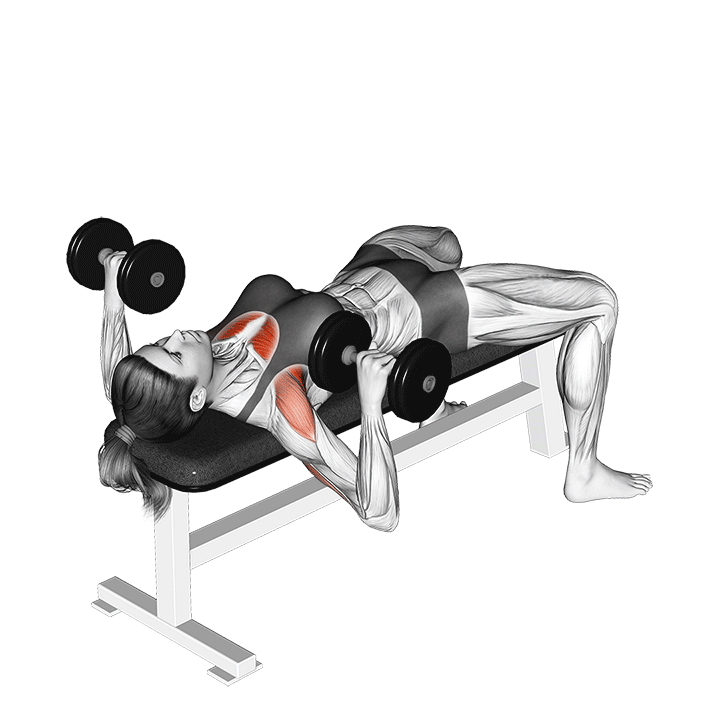
Unlike using a barbell to bench press, dumbbells force each side of the body to work independently of the other. This helps ensure that all muscles are worked to an equal extent, and can help correct any issues in bench press technique relating to symmetry.
Otherwise, the dumbbell bench press is much the same in terms of movement and mechanics. The same elbow extension, shoulder rotation and general stance are used for the same training purposes.
Of course, the dumbbell bench press will not be as heavy as its barbell counterpart due to the very same benefits it presents. Ensure that you adjust the weight accordingly.
Equipment Needed
The dumbbell bench press will require a pair of dumbbells and a bench to lie on.
Muscles Worked
The dumbbell bench press targets the triceps brachii, anterior deltoids and pectorals quite effectively.
In comparison to the barbell bench press, greater isometric recruitment of the entire deltoid muscle is present as greater stabilization demands are present.
How-to:
To perform a repetition of the dumbbell bench press, the lifter will first lie atop a bench with a pair of dumbbells extended over their chest, heels flat on the floor beneath them.
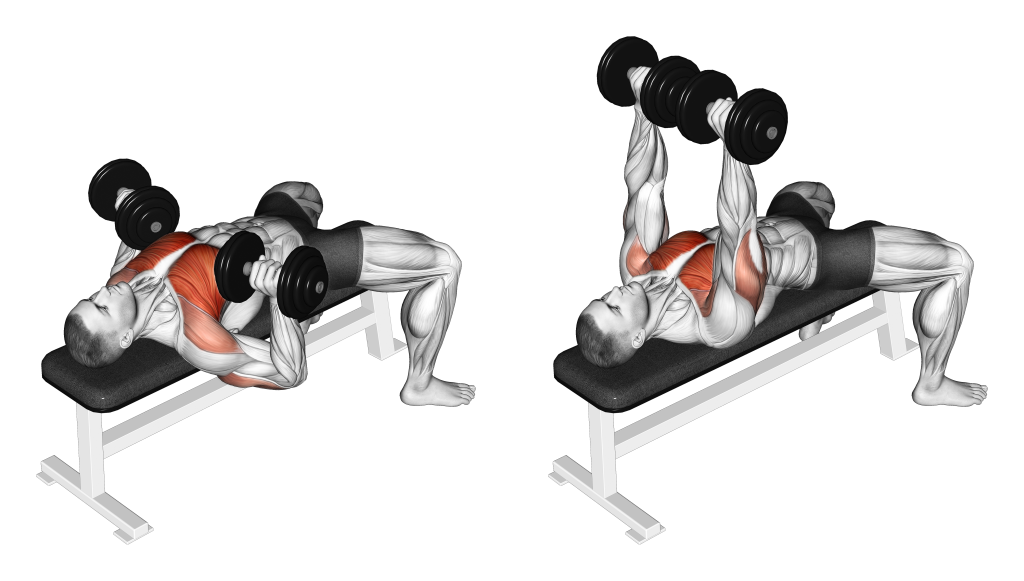
The lower back should be arched so as to create two contact points - of which are the upper back and the glutes. The shoulder blades should be retracted and pinned beneath the weight of the upper body.
In this stance, the lifter then simply lowers the dumbbells towards the sides of their torso, bending the elbows as they do so.
Once the dumbbells are touching the chest or parallel to it, the lifter drives through their palms and squeezes their pecs so as to raise their arms back over the body.
When the elbows are fully extended once more, the repetition is considered to be complete.
In comparison to the barbell bench press, a slightly more lateral elbow angle may be used. This will help stabilize the arms and aid in properly engaging the chest, as the touchpoint and overall distance between the arms themselves may be different when using dumbbells.
3. The Machine Chest Press
Exactly as it sounds; the machine chest press is a specially purposed training machine meant to replicate the movements of the bench press to some extent.
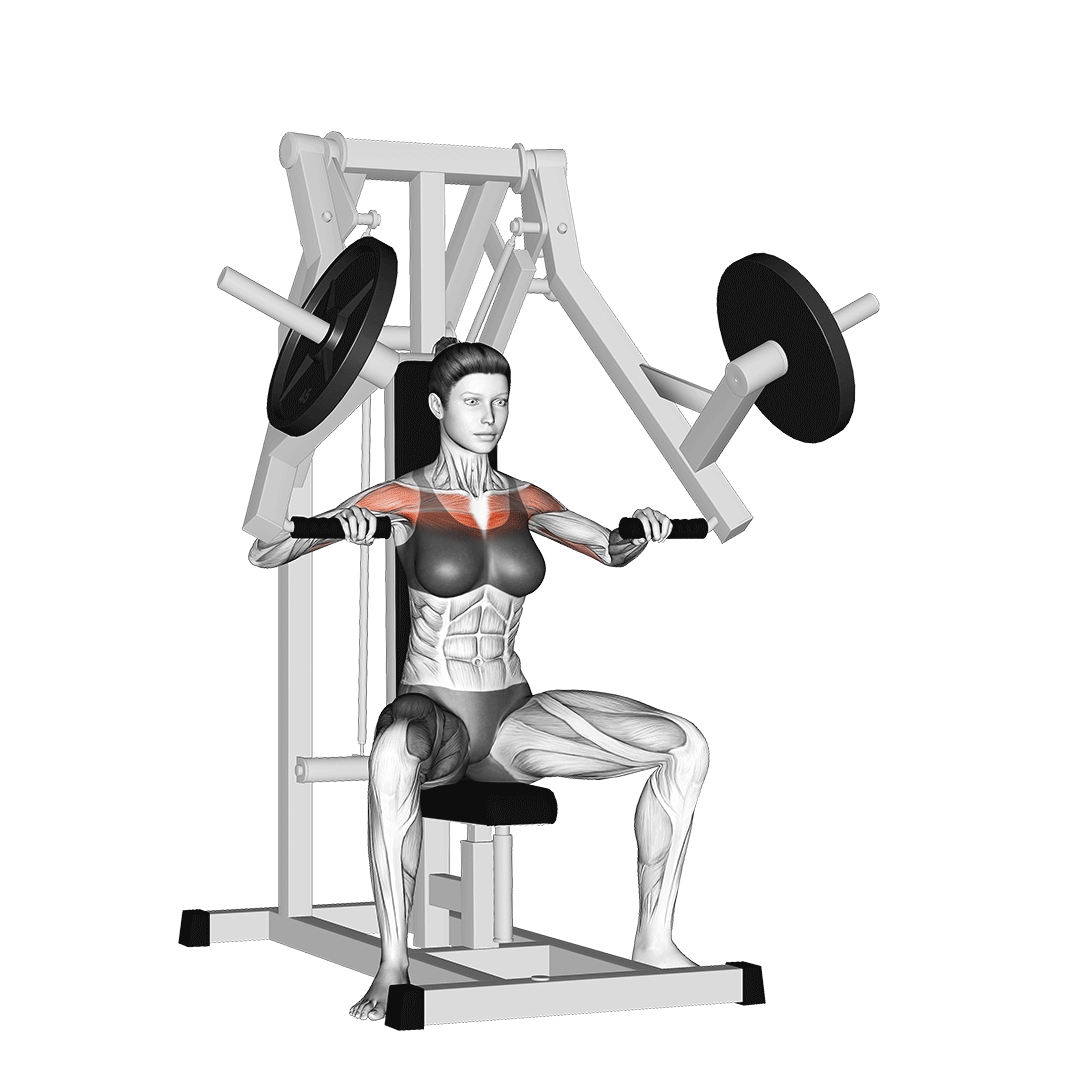
Like other machine-based exercises, the chest press allows for a fixed range of motion, self-stabilizing resistance and a generally lower risk of injury on account of the various features built into most chest press machines.
When used as a barbell bench press substitute, the chest press allows for both greater volume and more weight to be lifted with each set. However, this comes with the tradeoff of reduced real-world applicability as the chest press is less effective at developing muscular stability and natural movement patterns.
Ideally, the barbell bench press is replaced by the machine chest press in cases where the lifter is recovering from an injury or otherwise too unfamiliar with proper lifting principles to use the bench press safely.
Equipment Needed
This specific alternative requires a chest press machine - either a seated or lying one. Both are largely the same, apart from different levels of deltoid engagement.
In addition, some chest press machines do not have built-in resistance and will instead require plates be loaded onto the handles.
Muscles Worked
The chest press machine will target the triceps brachii, anterior deltoids and pectorals to a moderate extent.
Depending on the specific incline of the machine’s bench, the upper chest and anterior deltoids may be worked to a greater degree. Generally, the more inclined the angle, the more intense is this recruitment.
How-to:
To perform a repetition of the machine chest press, the lifter will first lie or seat themselves against the pads of the machine, adjusting the handles as close to their chest as needed.

Like with a free weight chest press, the shoulder blades should be retracted and an arch should be present at the lower back for greater stability.
Once situated securely, the lifter will place their hands approximately shoulder width apart along the handles, keeping their elbows less than parallel to the shoulders themselves.
Squeezing their chest and pushing through their palms, they will then extend their arms forwards until the elbows are nearly locked out.
To complete the repetition, the lifter then needs simply bend their elbows once more, allowing the handles to approach their chest in a slow and controlled manner.
4. The Weighted Dip
For a more calisthenics-leaning substitute to the barbell bench press, one may perform the classic dip exercise with the addition of further weight so as to preserve the same intensity.
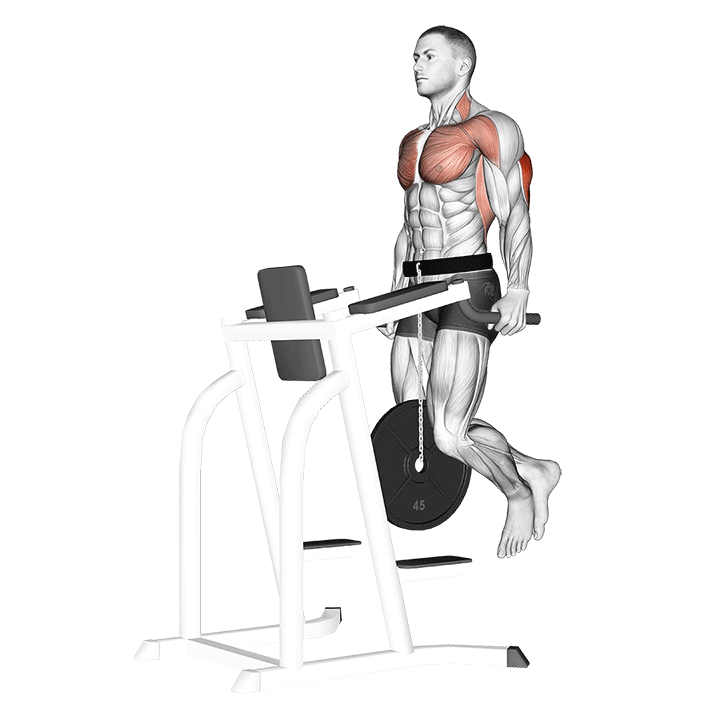
Weighted dips target the same muscle groups as the barbell bench press but with a relatively freer range of motion. This allows lifters to create a more functional workout without entirely foregoing the usual mass and strength benefits of stricter exercises like the barbell bench press.
Furthermore, weighted dips are a highly modifiable exercise - so much so that greater emphasis on one section of the chest can be achieved simply by leaning the torso more forwards or backwards.
Equipment Needed
Weighted dips will require a pair of parallel bars and some sort of equipment for adding further weight to the body. This can be a weighted vest, ankle weights, a dip belt and plates or even resistance bands.
Muscles Worked
The weighted dip will work the triceps brachii, pectorals, core and deltoids to a highly intense extent.
In particular, the shoulders are worked to an even greater intensity than is seen with the bench press due to their role in the dip.
How-to:
To perform a repetition of dips, the lifter will first begin by suspending themselves over a pair of parallel bars. The wrists should be in a neutral orientation beneath the shoulders, with the scapula partially depressed, the feet clear off the ground and the core braced so as to prevent any swinging.
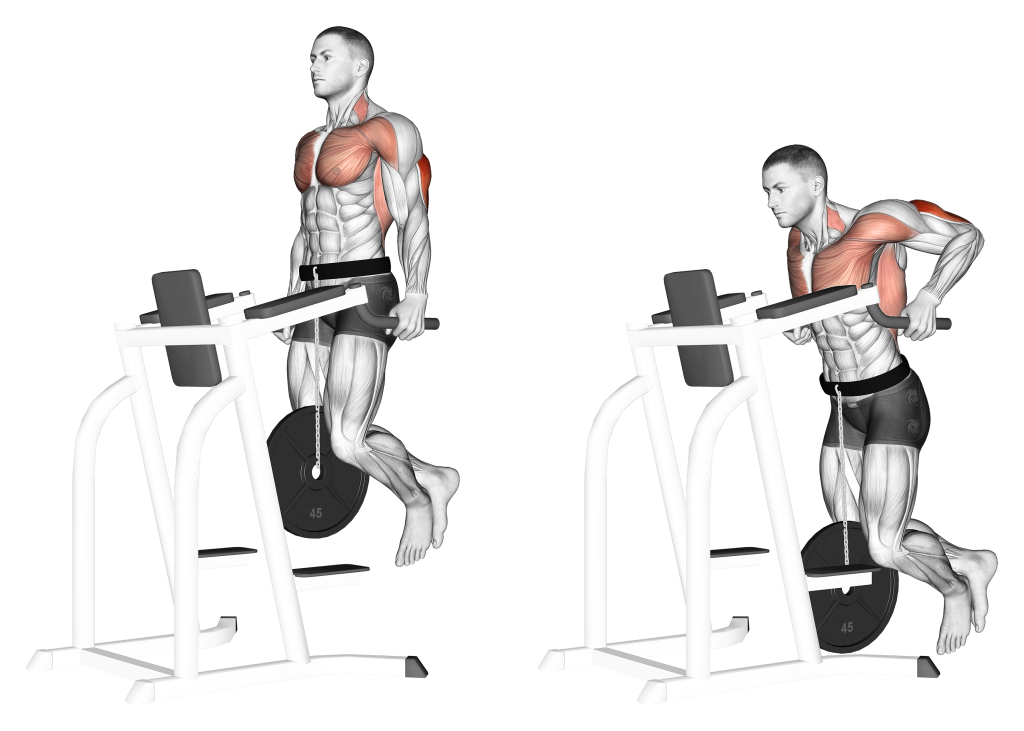
From this position, the lifter will bend at the elbows and lower themselves between the bars, contracting their chest and ensuring the shoulders do not internally rotate to an excessive degree.
Once the maximum range of motion has been reached, the lifter will drive through their palms and extend their arms back into a straightened position. When the elbows are fully extended, the repetition is considered to be complete.
In order to target the upper chest to a greater degree, the lifter should incline their torso further forwards by extending their legs further back. Likewise, the lower chest may be greater emphasized by creating a more vertical angle to the torso.
5. The Push-Up
The push-up is an excellent barbell bench press alternative if no equipment is present.
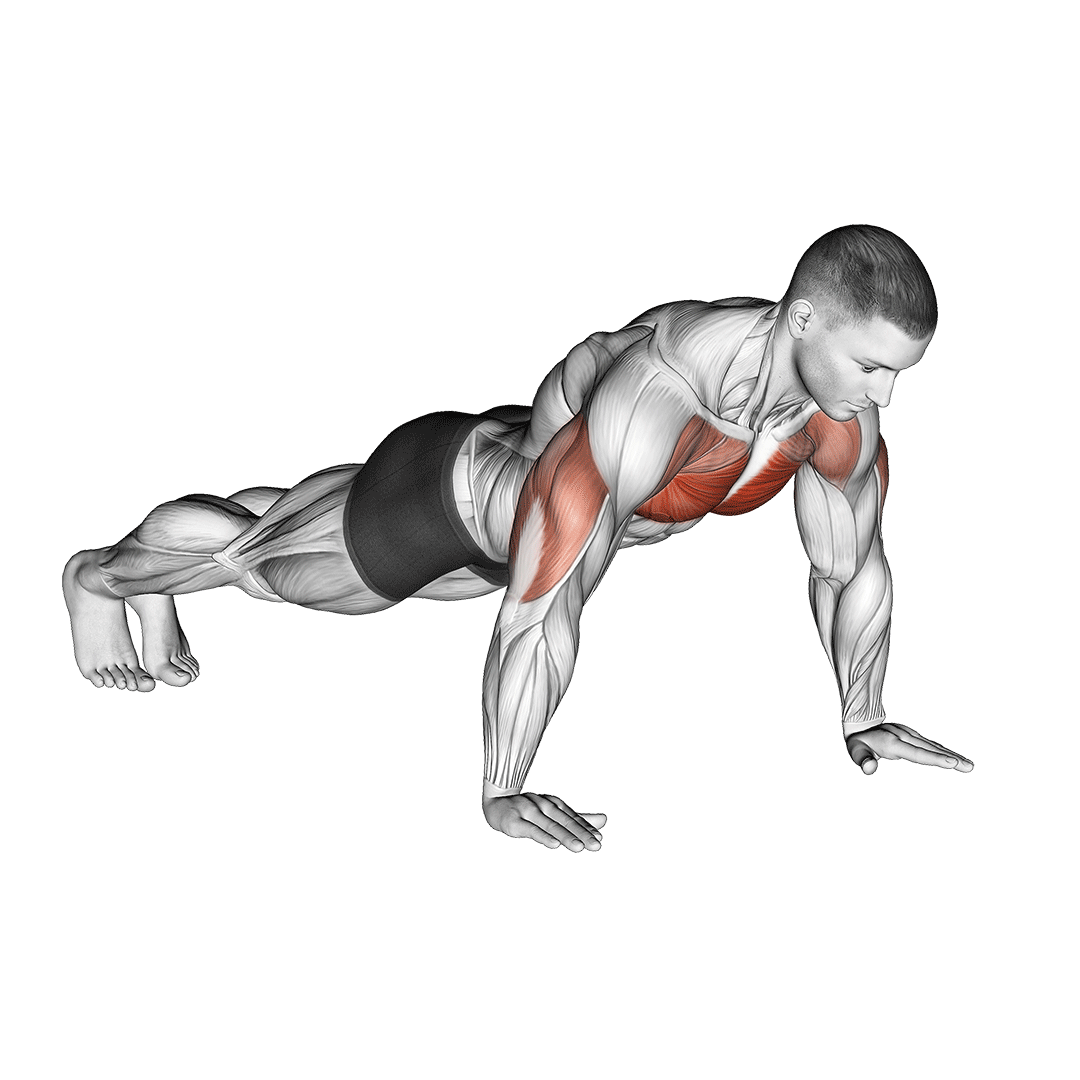
Although significantly less intense than the bench press itself, push-ups target the same musculature through similar movements. This can allow for the preservation of muscle in situations where the lifter is away from the gym - or if they wish to avoid the same loading pattern characteristic of a bench press.
Furthermore, push-ups feature a significantly greater capacity for volume than the barbell bench press on account of their lesser intensity - allowing for greater muscular endurance and caloric expenditure to be achieved.
Equipment Needed
Push-ups require no equipment whatsoever. However, a weighted vest may be used to increase the difficulty of the movement.
Muscles Worked
Push-ups primarily target the deltoids, triceps brachii and the muscles of the chest. However, the serratus, core and glutes are also worked to a lesser extent as well.
How-to:
To perform a repetition of the push-up, the lifter will assume a standard high plank stance with their hands parallel to their shoulders and their core braced so as to create a flat plane with their back.
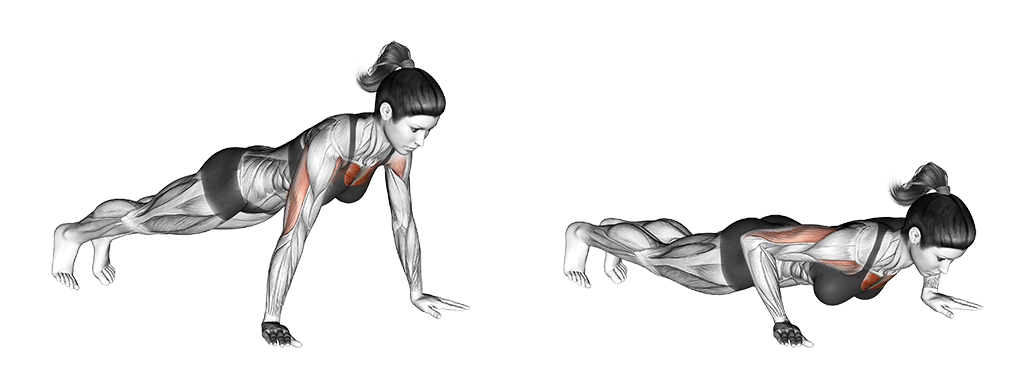
From this position, the lifter then bends at the elbows and lowers their chest towards the floor. The glutes should remain contracted and the legs fully extended so as to further target the upper body.
Once the chest is within several inches of touching the floor, the lifter contracts their pecs and drives through their palms - extending their arms back into a straightened position as they raise their torso away from the ground.
At this point, the repetition is now considered to be complete.
6. The Chest Fly (Dumbbell, Machine, etc.)
If the training program features the barbell bench press solely for pectoral muscle hypertrophy, then it is entirely possible to substitute the exercise with an isolation movement like the chest fly.
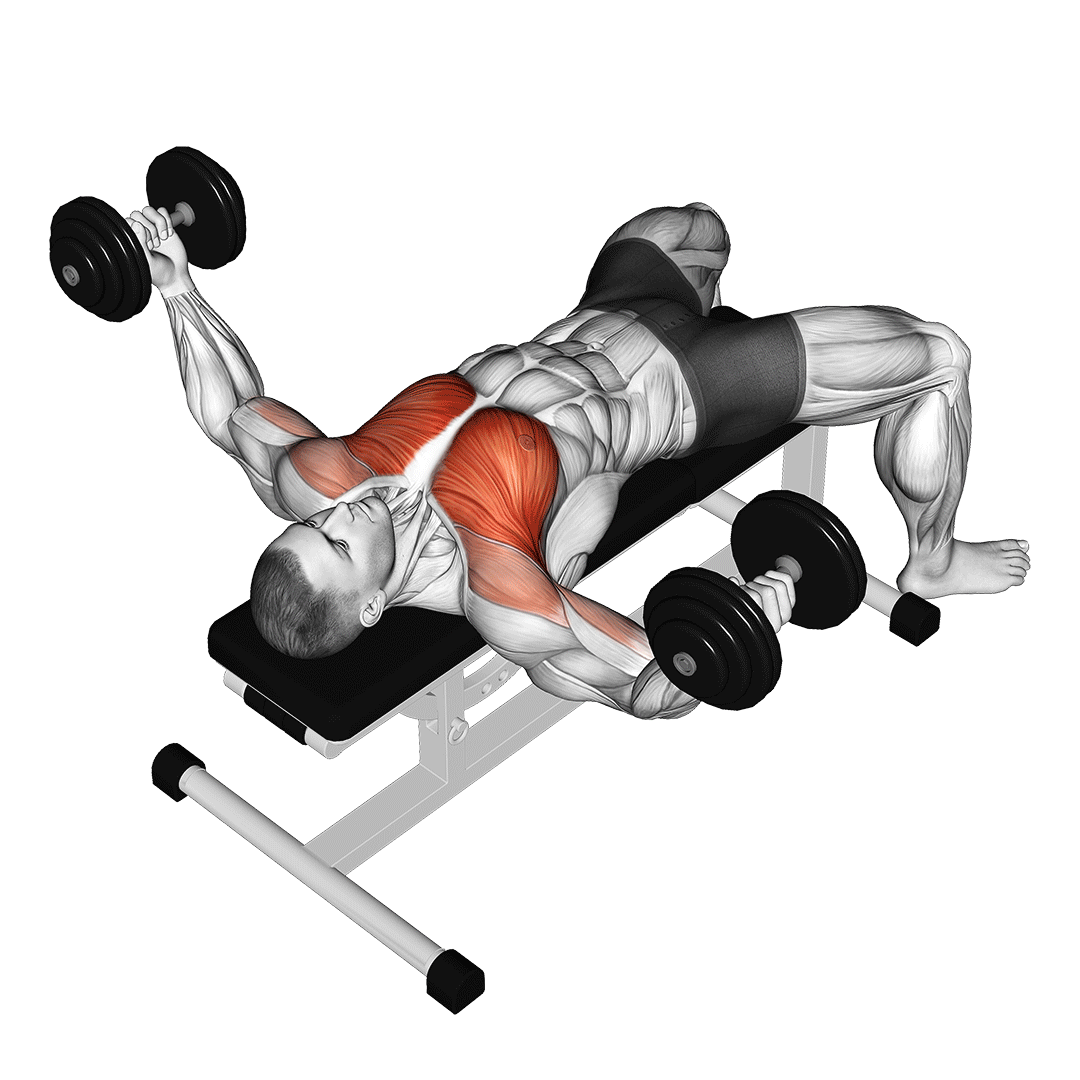
Although chest flyes come in many variations and utilize different forms of equipment, they all feature the same movement pattern and are performed for the same reasons; significant chest isolation for building more mass.
The chest fly is the ideal substitute to the barbell bench press if it functions solely as a mass-building exercise within your workout plan. However, they may be ineffective as a method of development strength, targeting muscles other than the pectorals or for improving any other aspect of your physique other than muscle mass.
If you truly wish to replicate the muscular development seen with a bench press, it may be best to combine the chest fly with a triceps isolation exercise and one that targets the deltoids as well.
Equipment Needed
The chest fly can be performed with a variety of different types of equipment.
For the purposes of simplicity, we suggest starting with a pair of lightweight dumbbells. However, it is indeed possible to perform chest flyes their namesake machine, a cable machine or resistance bands as well.
Muscles Worked
The chest fly is an isolation exercise that solely targets the pectoral muscles.
How-to:
To perform a repetition of the chest fly, the lifter will lie atop a bench with their arms extended out to the sides, gripping their chosen equipment in both hands. The elbows should remain only slightly bent throughout the repetition, with the scapula pinned beneath the torso and the shoulders in a neutral position.
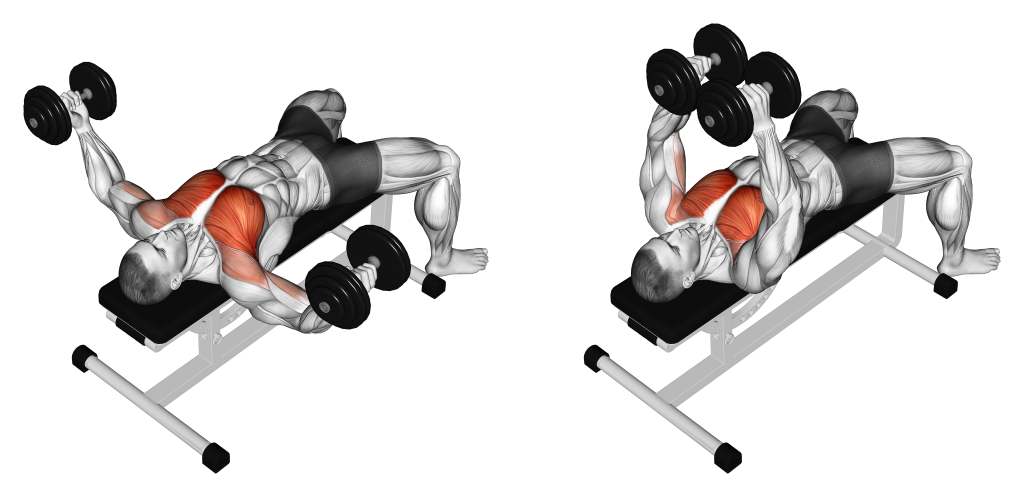
From this stance, the lifter pulls against the resistance of the equipment and draws their arms together over their chest, ensuring they remain relatively straight as they do so.
Once their arms are nearly touching over the body, the lifter slowly reverses the motion by spreading their arms out to the sides once more. This completes the repetition.
7. The Pullover (Dumbbell, Machine, etc.)
Pullovers are another odd lift that don’t quite replicate the bench press but can still act as a substitute in certain contexts.
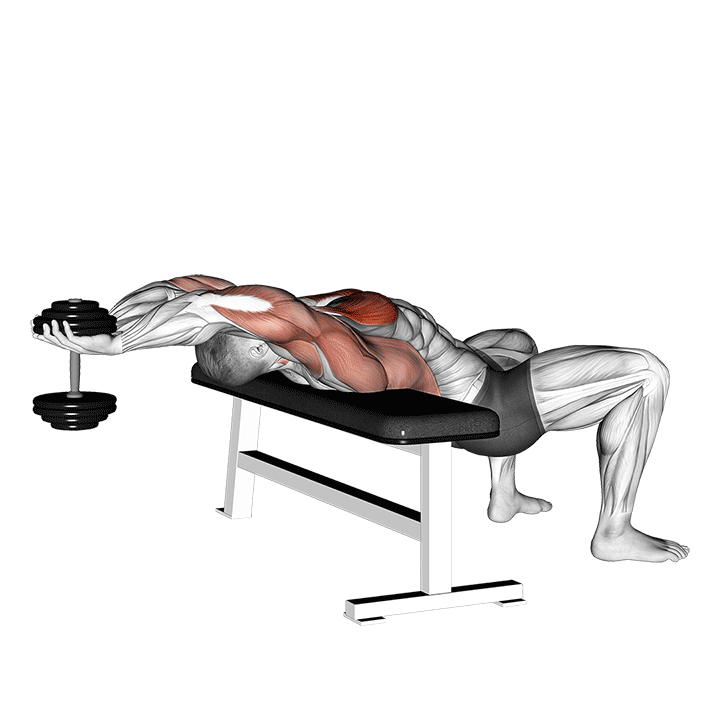
Pullovers target both the chest and other muscles found throughout the upper body, including those of the back. While this is quite different from what is seen with a barbell bench press, it allows lifters to save time and energy in full body workouts or if no barbell is present at their gym.
Of course, like chest flyes, the pullover is only effective as a substitute in these specific situations. They lack in terms of triceps recruitment, aren’t very effective at building pushing strength and are nowhere as intense or heavy as the barbell bench press can be.
Equipment Needed
Although pullovers are traditionally performed with the use of a dumbbell, there are indeed machines that replicate its movement pattern and create much the same benefits.
Muscles Worked
Pullovers target the latissimus dorsi, triceps brachii, the pectoral muscles and the posterior deltoid head.
How-to:
To perform a repetition of pullovers, the lifter will lie on their back, scapula retracted, lower back arched and both hands gripping their chosen equipment in both hands. If using a machine, the elbows should be pressed against the pads of the arm instead.
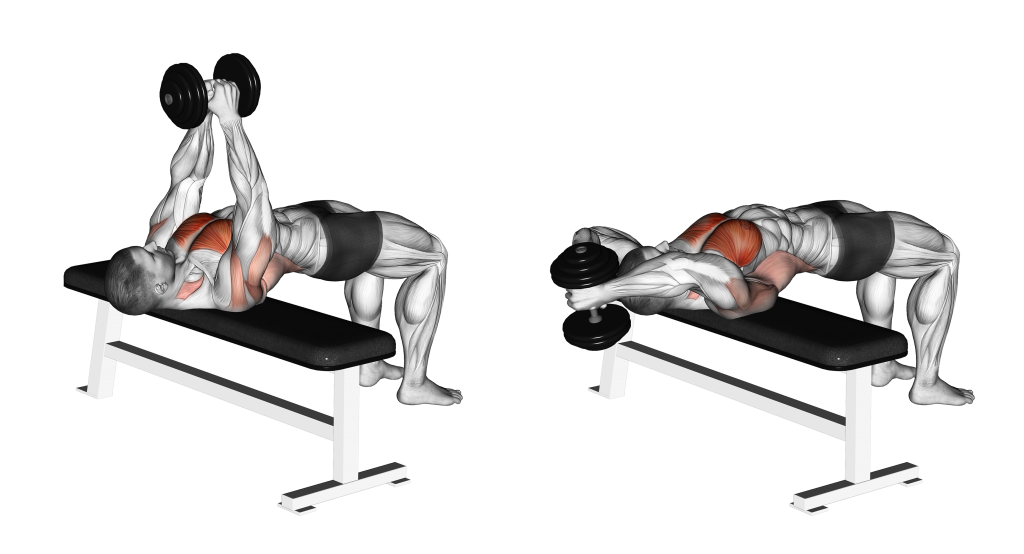
Now positioned correctly, the lifter will engage their back and chest as they lower the weight behind and beneath their head. If using a dumbbell or kettlebell, it should move in a radial arc, rather than a straight line.
Once the hands are behind the head and the upper arms are parallel to the sides of the head, the lifter will once again contract their largest muscle groups and pull the weight back over their head - thereby completing the repetition.
Honorable Mentions: the Pin Press and the Board Press
If you’re searching for a barbell bench press alternative due to sticking points or instability, then either the pin press or board press should be considered.
The pin press is a conventional barbell bench press performed with a barbell rack’s safety bars intentionally placed to cut the range of motion to only its upper half.
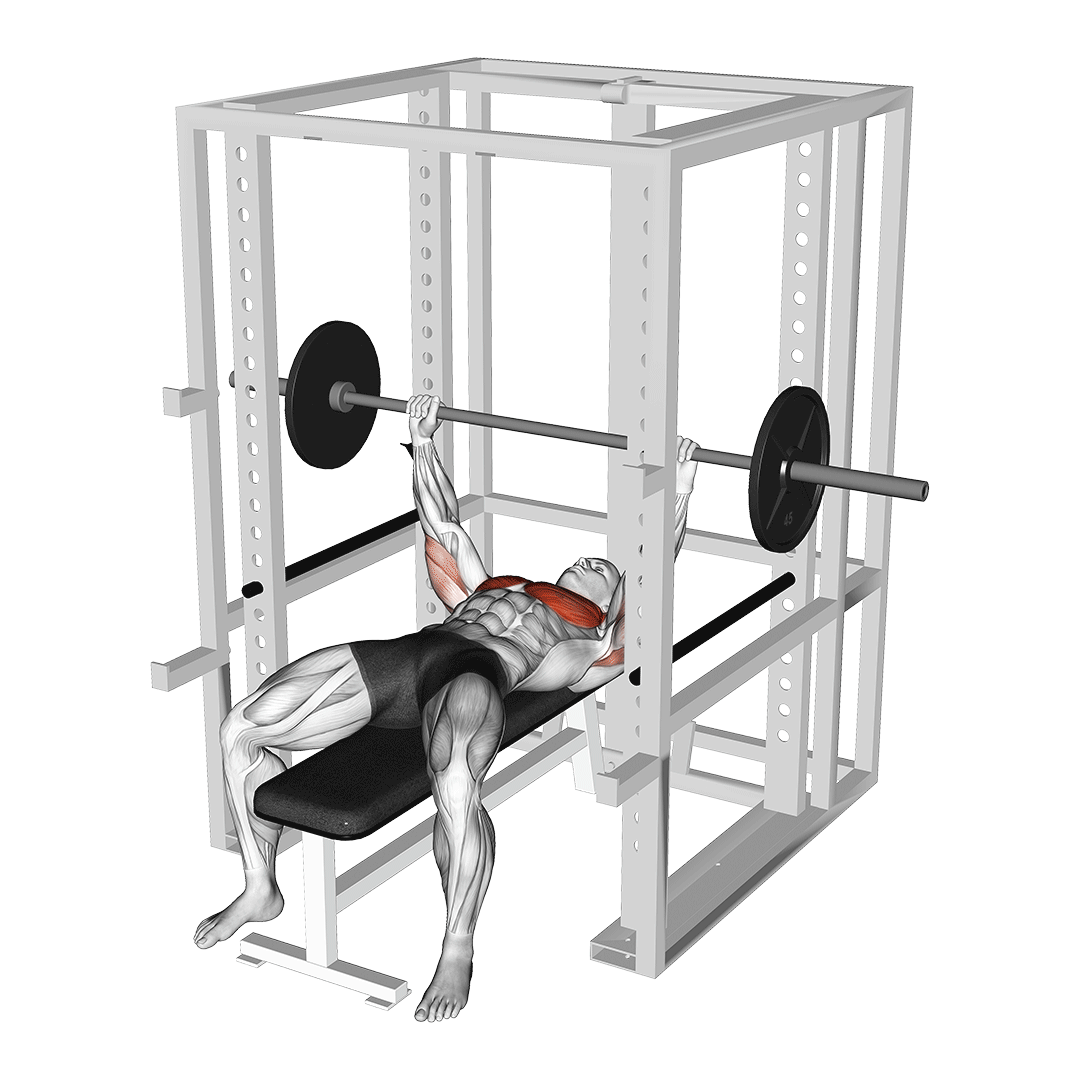
Likewise, the board press places boards atop the lifter’s chest so as to similarly limit the range of motion - only with somewhat greater flexibility to said limits.
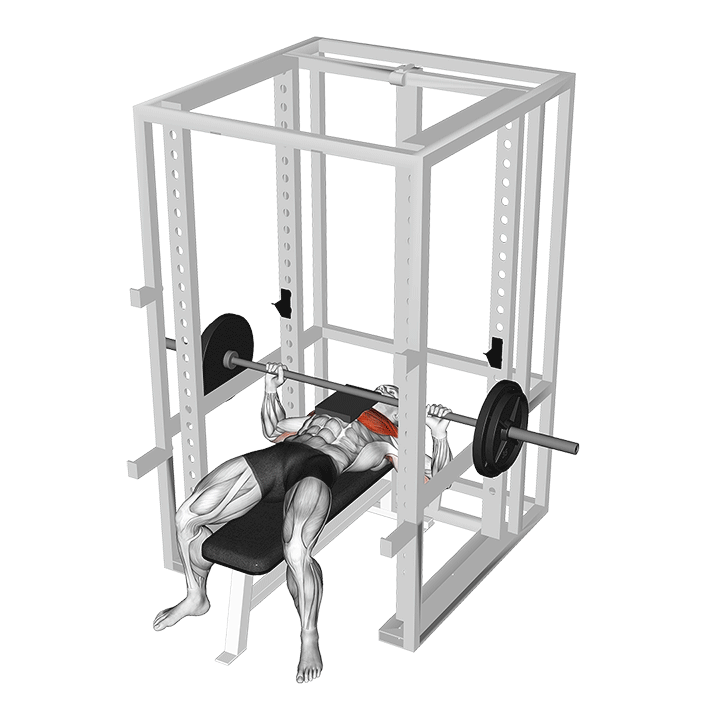
Either exercise may be used as a substitute in cases where your technique and execution of the bench press is limited by range-specific issues. Consider consulting a lifting coach if you are in such a situation, as it is unlikely performing chest flyes or machine chest presses will fix the problem.
Parting Advice; Consider Why You’re Substituting the Bench Out
Lifters will often change out the bench press for drastically different reasons. Some find that it aggravates an old injury in their shoulders, whereas others simply wish to change up their routine out of boredom.
The actual reason why you wish to sub out the bench will affect what exercises should be used to replace it.
Ensure that your training intensity is preserved regardless - and that it may also be an option to simply change how your barbell bench press is programmed. Few exercises can truly compete with the bench press in terms of strength and mass development, and it is an absolute essential for any aspiring powerlifter.
Finally, if you are seeking a bench press alternative due to injury, then it may be best not to train at all. A few weeks without training the upper body is far preferable to sustaining permanent physiological damage. Ensure you speak to a medical professional if you wish to still train.
References
1. Saeterbakken AH, Mo DA, Scott S, Andersen V. The Effects of Bench Press Variations in Competitive Athletes on Muscle Activity and Performance. J Hum Kinet. 2017 Jun 22;57:61-71. doi: 10.1515/hukin-2017-0047. PMID: 28713459; PMCID: PMC5504579.
2. Schütz P, Zimmer P, Zeidler F, Plüss M, Oberhofer K, List R, Lorenzetti SR. Chest Exercises: Movement and Loading of Shoulder, Elbow and Wrist Joints. Sports (Basel). 2022 Jan 31;10(2):19. doi: 10.3390/sports10020019. PMID: 35202059; PMCID: PMC8877248.
